Whale sharks are the largest fish in the world. These slow moving creatures are gentle giants, and are only dangerous to small fish and plankton. These filter feeders are massive, harmless creatures that are endangered by human activity. Read on to learn about the whale shark.
Description of the Whale Shark
The largest whale shark ever recorded was just over 41 ft. long. The average whale shark is typically 32 ft. long, and they typically weigh 20,000 lbs.! They also have a large, flattened head with a wide mouth that can be nearly 5 ft. long. Whale shark skin is grey along the back, and white on the underside. They are mottled with pale yellow/cream spots and stripes along their backs.
Interesting Facts About the Whale Shark
These magnificent fish are the largest creatures in the world behind the whales. They are relatively unique among sharks in their feeding behavior and adaptations.
- Why “Whale” Shark? – Contrary to what their name may suggest, whale sharks are not closely related to whales in any way. Whale sharks get their name from their immense size, which is reminiscent of large whale species. The name also comes from their foraging behavior, filter feeding, which is also used by baleen whales.
- A Unique Way to Feed – Filter feeding is a relatively unique feeding strategy among sharks. Whale sharks feed by opening their giant maws, taking in water, and then spitting the water out through their teeth, while keeping the small fish and plankton. The only other sharks that feed in this fashion are basking sharks and the seldom seen megamouth sharks.
- Filtering Mechanics – Actual whales filter food using large, stiff, hair-like plates of baleen. Whale sharks have developed their feeding strategy slightly differently. Instead of baleen, whale sharks have 3,000 tiny teeth that work to filter out food. These teeth are usually less than 6 mm. long.
- Leisurely Living – Whale sharks aren’t like most shark species, which have to capture their prey using speed and skill. Instead of chasing down food, whale sharks suck in large mouthfuls of water to filter. Because they have no need for speed, they are quite slow moving creatures that rarely exceed 3 mph when swimming. Instead of using their tails for propulsion, whale sharks casually sway their entire bodies to swim along.
Habitat of the Whale Shark
While swimming along, whale sharks prefer shallower depths. They can occasionally be found as deep as 6,000 ft., but for the most part remain towards the surface of the open ocean. These sharks also avoid colder seas, and are normally found in tropical or warm-temperate oceans. They are known to aggregate at feeding grounds seasonally.
Distribution of the Whale Shark
Whale sharks can be found in any tropical or warm temperate ocean worldwide. The seasonal feeding grounds vary greatly by population, but include South Africa, Belize, Western Australia, India, Honduras, the Philippines, Mexico, and Indonesia.
Diet of the Whale Shark
As a filter feeder, whale sharks feed on small fish, squid, plankton, and crustaceans. Some of its most common prey includes krill, copepods, fish eggs, squid, Christmas Island red crab larvae, and small fish. They have also been observed feeding on eggs during large spawning events of fish and corals.
These giants feed by opening their mouth and swimming forward to push the water in their mouth. They will also use active suction, opening and closing their mouths repeatedly to suck water in. It is estimated that a juvenile whale shark can eat 46 lbs. of plankton in a single day.
Whale Shark and Human Interaction
Little is known about the populations of whale sharks, but they are listed as endangered due to human activity. Whale sharks are killed due to illegal fishing for their fins, oil, and skin, which is sold in China. They are also commonly victims of bycatch in commercial fisheries, where they get caught in nets set for other animals and drown. Their large size and surface feeding habits also put them in danger of boat strikes, and being hit by a boat can kill whale sharks.
Ecotourism
Thankfully, whale sharks are being recognized for their value alive, in the ecotourism industry. Tourists are drawn to a number of different whale shark aggregation locations to swim with wild whale sharks. Because these creatures are so docile, they do not pose a threat to humans and commonly allow close swimming interactions.
Domestication
Whale sharks have not been domesticated in any way.
Does the Whale Shark Make a Good Pet
Ha! If you can build a tank large enough for a whale shark, and hire a specialized team of aquarists experienced in their care, maybe a whale shark would make a good pet. But alas, they are endangered species, and it is illegal to own a whale shark as a pet.
Whale Shark Care
The only whale sharks in a U.S. aquarium are housed at the Georgia Aquarium. These sharks were purchased from Taiwan’s commercial whale shark fishery, where they were destined to be someone’s dinner! Taiwan has since disbanded their commercial fishery.
At the Georgia Aquarium, four whale sharks are housed in a 6.3 million gallon tank. Before arriving at the aquarium, the sharks were taught to feed from specialized scoops. They are fed a specialized gel diet, as well as krill.
Behavior of the Whale Shark
These sharks are very slow moving, and spend much of their time cruising and feeding. They are solitary unless they are mating or moving to seasonal aggregation locations. These aggregations can be up to 400 animals, and scientists believe the gatherings may also include breeding or giving birth.
Reproduction of the Whale Shark
Very little is known about whale shark reproduction. No one has ever witnessed the mating process of whale sharks, nor the whales giving birth. Captured specimens provide all of the reproductive information we have on whale sharks.
Whale sharks are ovoviviparous, which means that the fertilized eggs remain in the womb until they hatch, and then the mother gives birth. It takes approximately 30 years for a whale shark to reach sexual maturity.

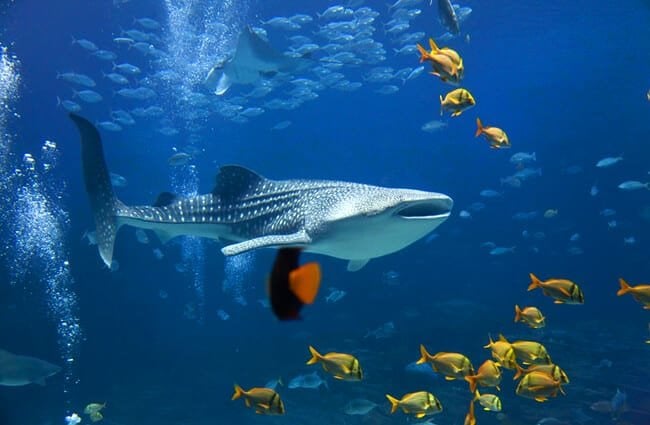



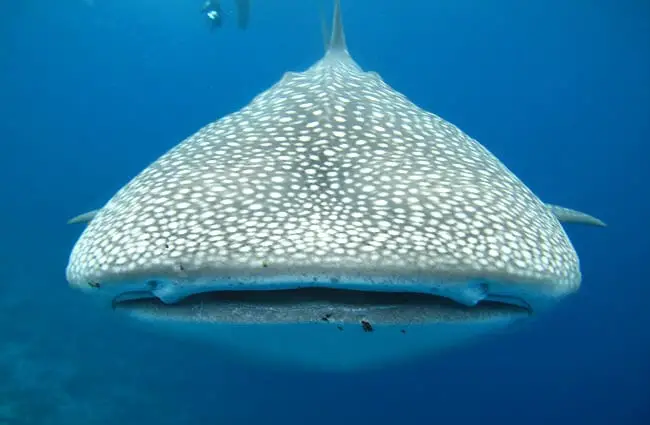
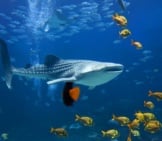

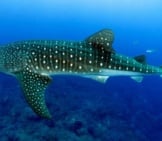

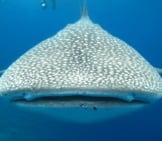
![Red Angus Closeup of a beautiful Red Angus cowPhoto by: U.S. Department of Agriculture [pubic domain]https://creativecommons.org/licenses/by/2.0/](https://animals.net/wp-content/uploads/2020/03/Red-Angus-4-238x178.jpg)












![Red Angus Closeup of a beautiful Red Angus cowPhoto by: U.S. Department of Agriculture [pubic domain]https://creativecommons.org/licenses/by/2.0/](https://animals.net/wp-content/uploads/2020/03/Red-Angus-4-100x75.jpg)

